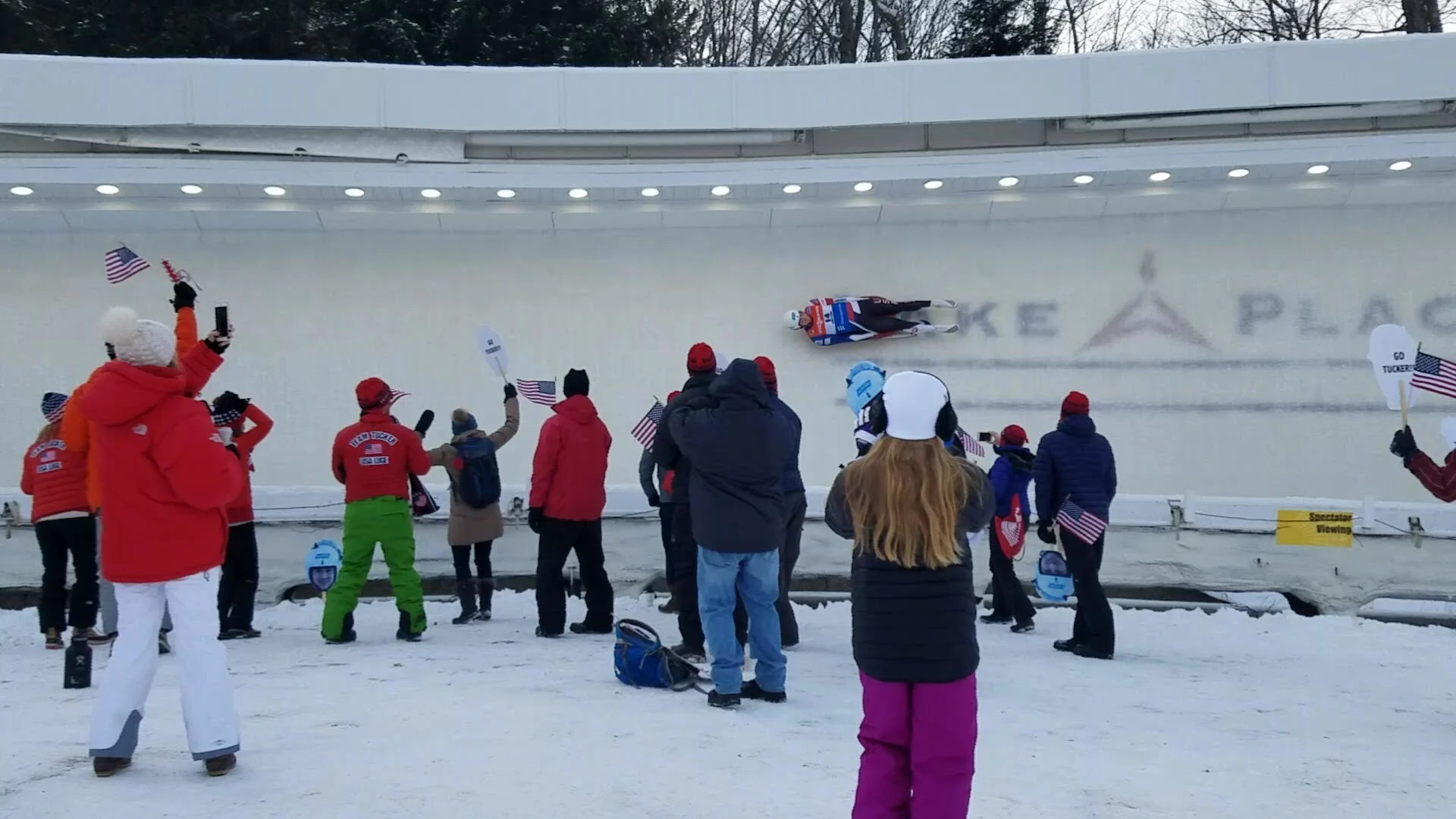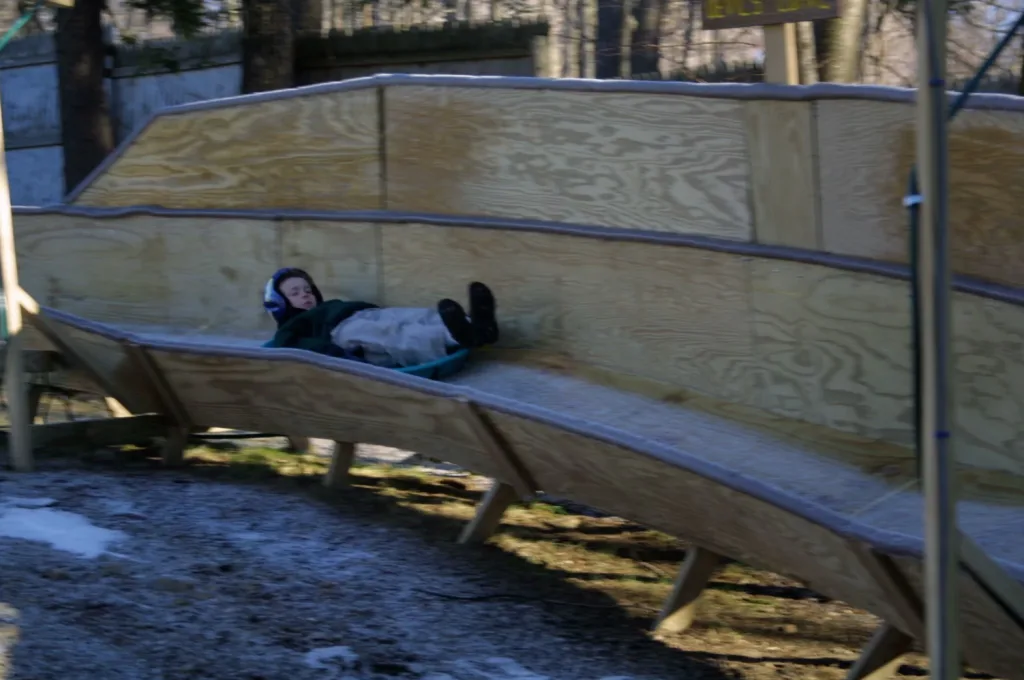Topics
- Article
From the Backyard to the Olympics, Literally - Tucker West's Story

“My family and I have always kind of been Olympic nerds,” Tucker West told us. “Every time they’re on, we watch non-stop from the opening to closing ceremonies, we absolutely love it. I first saw luge when I was seven years old during the 2002 games in Salt Lake City. It just seemed so cool to me. I was always a speed demon as a child, I was that kid who would ski straight down the mountain. And I loved sledding, so luge was just a natural fit. It was extreme sledding.”
“From then on, I started pretending to be a luger,” Tucker explained. “Whenever there was snow, I’d drag out my flexible flyer or plastic sled and hurtle myself down the steepest hill I could find. But, I quickly realized that still wasn’t fast enough for me. Eventually, my dad came up with this hair-brained idea to built our own luge track in the backyard. Over the course of 2-3 months one summer, we prototyped it, got all the supplies at the hardware store, then constructed this monstrosity behind our house. At its longest, the wooden track was about 800 feet and let me get up to speeds of about 25-30 miles per hour. That was how I got my first taste of luge.”

By the time he was nine, Tucker was traveling with his father to Lake Placid on weekends to experience the real thing. “I just absolutely fell in love with it,” he said.
Fast forward to the 2014 winter games in Sochi, and an 18-year-old Tucker was the youngest Olympic luger in United States history. Now 22, Tucker will be back representing Team USA at the 2018 games in PyeongChang next month.
A post shared by Tucker West (@tuckerwest1) on Dec 18, 2017 at 7:23pm PST
“Offseason” training
Olympic luge training is a year-round endeavor, but it varies widely from season to season.
“Much of what we do is very similar to other athletes,” Tucker said. “We’re a power based sport so we do a lot of weight-room activity–the Olympic lifts, the power clean and snatch, that sort of thing. The start of a run is the only point when you can physically accelerate yourself on the track, so that’s a huge aspect of our training. That’s our focus in the summer, then in the winter we shift over to sliding.”

“We’re at the level where we need every little bit of training to help push ourselves to the top,” Tucker added. “I use WHOOP as a tool to know the analytics of my body and how it’s performing. One of the metrics we rely on heavily is the Day Strain. If it gets too high over a certain period of time we’ll throttle back on training. As a team, we’ve actually noticed a pretty significant decrease in minor overuse and wear-and-tear injuries because of this. Lugers tend to have a lot of shoulder, wrist and back injuries since the nature of our sport is so impactful on those joints. This past summer, those nagging injuries definitely decreased, which allowed us to train much more efficiently.”
Recovery
“Recovery is a really big thing for me, obviously it doesn’t feel very good when you crash at 90 miles per hour,” Tucker said. “Gone are the days when you can just say ‘Man, I’m sore today, maybe I should take it easy’ or ‘I feel great, let’s go max out in the weight room.’ Now we have data to back that up. The WHOOP Recovery metric has really helped me hone in on what methods help my body recover faster–whether it’s a soft tissue roll out with foam rollers or tennis balls directly after a workout, a series of stretches later in the evening, a contrast bath on certain days, or even the timing and quantity of fluid intake before bed. WHOOP can pick up on these small changes in routine and show me what is the most effective.”
In particular, Tucker noted that hydration and getting to bed early are key elements in improving his next-day Recovery.
Teammates/rivals
We asked Tucker about his relationship with fellow Team USA luger Chris Mazdzer, another avid WHOOP user. What is it like to be teammates in a sport where athletes compete only as individuals? Is there a rivalry?
“Chris and I have trained together for a long time. We kind of are rivals and we’re competitors for sure, but at the end of the day we’re teammates and we want to help each other out as much as we can. We share lines down the track, we share sled setups, we try to make each other as fast as possible. The cool thing about the two of us is that we’re so close to the same skill level, so we kind of drive each other. We’re often only hundredths of a second apart in races.”
A post shared by Tucker West (@tuckerwest1) on Dec 4, 2015 at 3:52pm PST
“In 2012, Chris and I actually tied for a national championship. We’ve been incredibly close for such a long time that it’s forced each of us to step our game up and ultimately get better and better. Chris has been around a little longer than I have, but we’ve both progressed and won World Cup medals at the same time. Our dynamic has really helped motivate us to get to the next level.”
The month ahead
We spoke to Tucker on January 3. Here’s what he had to say about his training and preparation for the final month before the Olympics begin:
“For the next week, we’re still in the high-Strain building phase. Then after that, we’ll start to taper down until the Olympics. We actually have four World Cup races coming up, so we’re just kind of doing the normal thing. However, we’re not going all-out for these races because we want to push through and be at peak form the Olympics. We’re kind of training through them to be Recovered and potentiated for PyeongChang, the end goal.”
The first of those four races was on January 7. As you can see below, Tucker cut back his Strain (blue) prior to the competition and boosted his Recovery (green) to 93% on race day:

Goal for PyeongChang
What does Tucker hope to accomplish at his second Olympic games? “Honestly, the goal is to just have four clean runs and race a good race,” he said. “And hopefully if I do that, the results will follow.”
Over the next few weeks, we’ll take a closer look both Tucker and Chris’ WHOOP data as they strive to optimize performance heading into the PyeongChang games.
RELATED:
‘Ultimate Sledding’ – 9 Questions with Team USA’s Chris Mazdzer
“My Quest for Glory on the Sled” by Kendall Wesenberg, Team USA Skeleton